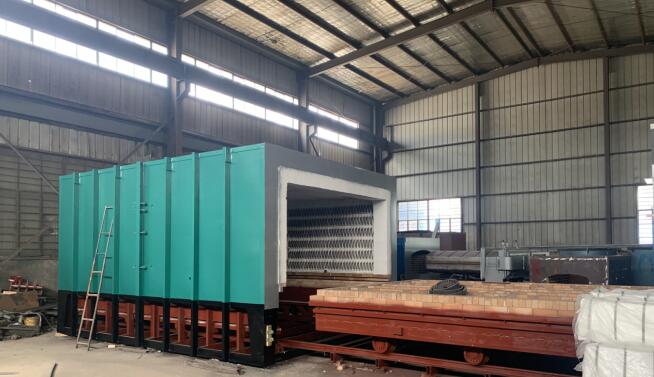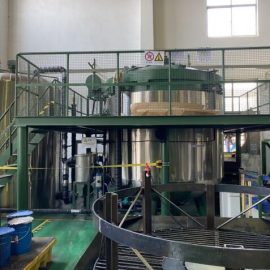Introduction And Classification Of Annealing Process
Among various heat treatment processes, the annealing process is one of the most common. So, what exactly is an annealing process? What are the specific types of annealing processes, let us analyze them one by one:
1. Annealing concept
Annealing is a heat treatment process in which metals and alloys are heated to an appropriate temperature, held for a certain period of time, and then slowly cooled. After annealing, the hypoeutectoid steel is ferrite and flaky pearlite; the eutectoid steel or hypereutectoid steel is granular pearlite. In short, the annealed structure is a structure close to the equilibrium state.
2. The purpose of annealing
(1) Reduce the hardness of the steel and improve the plasticity to facilitate cutting and cold deformation processing.
(2) Refine the grain, eliminate the structural defects caused by casting, forging and welding, uniformize the structure and composition of the steel, improve the performance of the steel or prepare the structure for the subsequent heat treatment.
(3) Eliminate internal stress in steel to prevent deformation and cracking.
3. The types of annealing processes
There are mainly homogenization annealing, complete annealing, incomplete annealing, isothermal annealing, spheroidizing annealing, recrystallization annealing, stress relief annealing
3.1. Homogenization annealing
Homogenization annealing is to reduce the segregation of the chemical composition and the inhomogeneity of the structure of the metal ingot, casting or forging billet. It is heated to a high temperature, kept for a long time, and then slowly cooled to homogenize the chemical composition and structure. annealing process.
The heating temperature of the homogenization annealing is generally Ac3+ (150-200 ℃), that is, 1050-1150 ℃, and the holding time is generally 10-15 h, in order to ensure that the diffusion is fully carried out, and the purpose of eliminating or reducing the uneven composition or organization is achieved. Due to the high heating temperature, long time and coarse grains of diffusion annealing, complete annealing or normalizing should be performed after diffusion annealing to re-refine the structure.
3.2. Full annealing
Complete annealing, also known as recrystallization annealing, is an annealing process in which the iron-carbon alloy is completely austenitized and then slowly cooled to obtain a structure close to the equilibrium state.
Complete annealing is mainly used for hypoeutectoid steel, generally medium carbon steel and low and medium carbon alloy structural steel forgings, castings and hot-rolled profiles, and sometimes for their welded components. Complete annealing is not suitable for hypereutectoid steel, because hypereutectoid steel needs to be heated above Acm for complete annealing. During slow cooling, cementite precipitates along the austenite grain boundary and is distributed in a network, resulting in increased material brittleness. Leave hidden dangers for final heat treatment.
The heating temperature for fully annealed carbon steel is generally Ac3+ (30-50°C); alloy steel is Ac3+ (500-70°C); the holding time depends on the type of steel, the size of the workpiece, the amount of furnace installed, and the type of equipment selected. determined by various factors. In order to ensure that the supercooled austenite is completely transformed into pearlite, the cooling of the complete annealing must be slow, and the furnace is cooled to about 500 ° C for air cooling.
3.3. Incomplete annealing
Incomplete annealing is an annealing process in which the iron-carbon alloy is heated to a temperature between Ac1 and Ac3 to achieve incomplete austenitization, followed by slow cooling.
Incomplete annealing is mainly suitable for medium and high carbon steel and low alloy steel forgings, etc. Its purpose is to refine the structure and reduce the hardness.
3.4. Isothermal annealing
Isothermal annealing is to heat the steel or blank to a temperature higher than Ac3 (or Ac1), keep it for an appropriate time, then quickly cool it to a certain temperature in the pearlite temperature range and keep it isothermally, so that austenite is transformed into pearlite. The tissue is then cooled in air by an annealing process.
The isothermal annealing process is applied to medium carbon alloy steel and low alloy steel, and its purpose is to refine the structure and reduce the hardness. The heating temperature of hypoeutectoid steel is Ac3+(30~50)℃, and the heating temperature of hypereutectoid steel is Ac3+(20~40)℃, keep it for a certain period of time, and carry out isothermal transformation with furnace cooling to slightly lower than Ar3 temperature, and then air-cooled. . Isothermal annealed microstructure and hardness are more uniform than fully annealed.
3.5. Spheroidizing annealing
Spheroidizing annealing is an annealing process that spheroidizes carbides in steel. The steel is heated to 20-30 ℃ above Ac1, kept for a period of time, and then slowly cooled to obtain the structure of spherical or granular carbides uniformly distributed on the ferrite matrix.
Spheroidizing annealing is mainly suitable for eutectoid steel and hypereutectoid steel, such as carbon tool steel, alloy tool steel, bearing steel, etc. These steels are air-cooled after rolling and forging, and the resulting structure is lamellar pearlite and reticular cementite. This structure is hard and brittle, which is not only difficult to cut, but also easily deformed and cracked in the subsequent quenching process. The spherical pearlite structure obtained by spheroidizing annealing, in which the cementite is spherical particles, is dispersed on the ferrite matrix. When heated, the austenite grains are not easy to grow, and the workpiece deformation and cracking tendency are small when cooling. In addition, for some hypoeutectoid steels that need to improve cold plastic deformation (such as stamping, cold heading, etc.), spheroidizing annealing can sometimes be used.
The heating temperature of spheroidizing annealing is Ac1+(20~40)℃ or Acm-(20~30)℃, isothermal cooling or direct slow cooling after heat preservation. During spheroidizing annealing, the austenitization is “incomplete”, only the flaky pearlite is transformed into austenite, and a small amount of excess carbide is dissolved. Therefore, it is impossible to eliminate reticulated carbides. If there are reticulated carbides in hypereutectoid steel, normalizing must be carried out before spheroidizing annealing to eliminate them in order to ensure normal spheroidizing annealing.
3.6. Recrystallization annealing
Recrystallization annealing is a heat treatment process in which the metal after cold deformation is heated to above the recrystallization temperature and maintained for an appropriate time to recrystallize the deformed grains into uniform equiaxed grains to eliminate deformation strengthening and residual stress.
3.7. Stress relief annealing
Stress relief annealing is an annealing process to eliminate residual stress caused by plastic deformation processing, welding, etc. and existing in castings.
There is internal stress inside the workpiece after forging, casting, welding and cutting. If it is not eliminated in time, the workpiece will be deformed during processing and use, affecting the accuracy of the workpiece. It is very important to use stress relief annealing to eliminate the internal stress generated during processing.
The heating temperature of stress relief annealing is lower than the phase transition temperature A1, therefore, no structural transformation occurs during the entire heat treatment process. The internal stress is mainly eliminated by the workpiece in the process of heat preservation and slow cooling. In order to eliminate the internal stress of the workpiece more thoroughly, the heating temperature should be controlled during heating. Generally, it is fed into the furnace at a low temperature, and then heated to the specified temperature at a heating rate of about 100 °C/h. The welding temperature should be slightly higher than 600℃. The holding time depends on the situation, usually 2 to 4 hours. The holding time for stress relief annealing of castings shall be the upper limit, the cooling rate shall be controlled at (20-50) °C/h, and the cooling can be carried out only after cooling to below 300 °C.

Research Progress On Annealing Process Of Amorphous Nanocrystalline Soft Magnetic Alloys QT40-10 Ductile Iron Heat Treatment Process Research Progress Of Magnetic Field Annealing Effect Of Nanocrystalline Soft Magnetic Alloys


Contact us
Your email address will not be published. Required fields are marked *